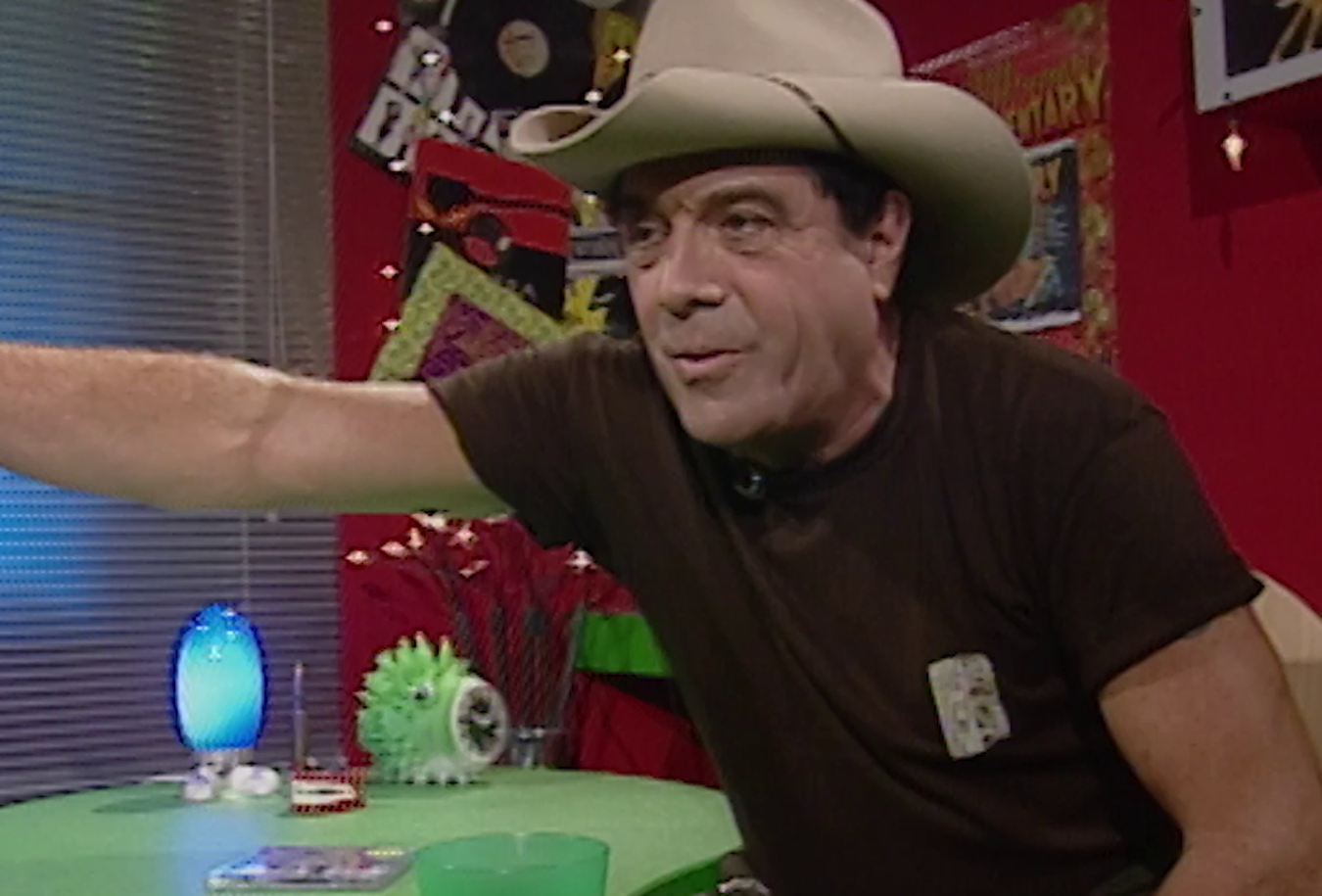
Number 96: Episodes 1003 and 1004: ‘It’s you I love, Arnold’
Rhonda (Justine Saunders) confesses her love for Arnold (Jeff Kevin) and Dorrie (Pat McDonald) forbids Junior (Curt Jansen) from seeing a ‘brazen hussy’.
Summary by Andrew Mercado
This episode begins as each one always did – with an establishing shot of the building’s exterior before the camera zooms into whatever flat had the cliff-hanging drama from the previous episode. The new instalment then seeks to immediately resolve the drama; in this case, it’s Flat 6 where Indigenous hairdresser Rhonda is in tears, admitting to Arnold that she moved into the apartment under false pretences.
Actress Justine Saunders appeared in a TV Week spread at this time with the headline ‘Justine Breaks the Colour Barrier’. The magazine talked up how she was the ‘first Aboriginal actress to be cast in a regular role in a television series’ and Saunders was proud to prove that her people could ‘do more than run through the bush without clothes. I feel strongly about the fact that so many producers seem to frown upon giving us roles on an equal footing with white actors.’ She was also excited about the reaction of viewers after her first bedroom scene. ‘I wonder what some people will say when they first see a black girl and a white man in bed together. Apart perhaps from period dramas, I’m sure it has never been done on Australian television before.’
Prior to Number 96, all of Saunders’s TV roles (with the exception of a 1975 ABC play Pig in a Poke where she had played a receptionist) had been in period dramas where she was either nude, raped or brutally killed. Rhonda was not killed in Number 96, but she was seen nude and became a victim of the Hooded Rapist. Saunders, however, felt the scenes were ‘completely in context’ this time around and not ‘exploitation’ like her previous roles.
After the scene with Rhonda and Arnold, the action quickly moves to Flat 3 and some comedy relief. Note Junior’s reference to the Sydney Opera House, where the show has recently filmed sequences around its forecourt and harbourside restaurant. And listen for Dorrie’s malapropisms (‘I was merely speaking metaphysically’, instead of ‘metaphorically’), and her use of the catchphrase ‘Allow me to be the best judge of that’, which she has appropriated from Claire Houghton.
Episode Synopsis
These episodes are from the show’s later period when it was trying to woo back viewers with another (politically incorrect) creepy visitor storyline: after the Knicker Snipper and the Pantyhose Strangler, along came the Hooded Rapist. These episodes also boast new technology (the use of a green screen effect to make the outside of sets look more realistic) and, for the first time ever, a sudden focus on teenage characters moving into the building.
Curator's Notes
The popularity of Number 96 had well and truly peaked by this stage, but it was still enjoying a wave of publicity around this episode thanks to the top-rating TV special Number 96: And They Said It Wouldn’t Last which had celebrated the milestone of 1000 episodes.
Technically, the show was quite different from those first black-and-white years (from 1972) – now filmed in (quite garish) colour and also airing two one-hour episodes per week instead of five half-hour episodes Monday to Friday. Producers were talking up this new format by insisting that longer episodes allowed for more location filming. They were indeed filming outdoors a lot more but this was a response to the much bigger-budget American shows like Starsky and Hutch (1975–79) which were now screening against Number 96 in the 8.30 pm timeslot.
This is also a time of experimentation in how to make the studio-based sets look more realistic. This episode features a moving streetscape outside of Norma’s Bar with actors moving in front of it (see clip two).
Episodes 1003 and 1004 of Number 96 were first broadcast on the 0 Network (later to become Channel Ten) on 28 June 1976. A late-night repeat aired in Sydney in 1980.
Notes by Andrew Mercado
The National Film and Sound Archive of Australia acknowledges Australia’s Aboriginal and Torres Strait Islander peoples as the Traditional Custodians of the land on which we work and live and gives respect to their Elders both past and present.


